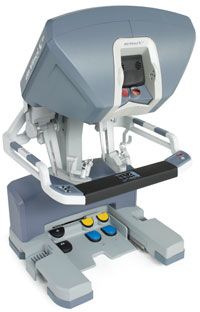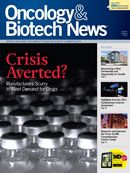Publication
Article
Oncology & Biotech News
Robotic-Assisted Laparoscopic Radical Prostatectomy Has Steep Learning Curve
Author(s):
Performing robotic-assisted laparoscopic radical prostatectomy (RALP) surgeries at an expert level is not as easy as has been previously assumed

Performing robotic-assisted laparoscopic radical prostatectomy (RALP) surgeries at an expert level is not as easy as has been previously assumed. According to results of a retrospective analysis of RALP surgeries presented at the 2011 ASCO Genitourinary Cancers Symposium, it takes at least 1600 surgeries to gain a level of competence considered acceptable in terms of achieving negative surgical margins and operating time.
Of the 90,000 radical prostatectomies performed each year in the United States, an estimated 70,000 are performed robotically. More than 70% of RALP surgeries, however, are done by surgeons who handle fewer than 100 surgeries (ie, cases) per year. Prasanna Sooriakumaran, MD, PhD, the lead author of this study, reported that the learning curve for RALP is between 25 and 40 cases for safety.
“There is no good evidence about how long it takes to perform expert-level RALP,” said Sooriakumaran. “Our study suggests there is a long learning curve to become competent at achieving negative surgical margins, which is the goal of prostate cancer surgery. We recommend that RALP be performed by surgeons who see a high volume of patients.” Sooriakumaran is a visiting fellow in urology at the Weill Cornell Medical College in New York.
“Even for surgeons who perform hundreds of RALP procedures each year, it takes a long time to get to the stage where they are getting the best possible cancer control results,” said Sooriakumaran. “Our results show that it takes a significant amount of experience to achieve good cancer cure rates and low positive surgical margins with this operation.”
For the study, achieving positive surgical margins of <10% was considered acceptable. Sooriakumaran explained that this is the standard of care for other surgical approaches to prostate cancer. In addition to less time-consuming training for safety, RALP is touted as having several advantages over typical laparoscopic surgery. RALP provides surgeons with a 3-D view of the operative area, improved magnification, hand tremor filtering, and range of motion similar to that of the human wrist, while typical laparoscopic surgery utilizes awkward instruments that resemble chopsticks, he explained.
The study was conducted during a 6-year period between 2003 and 2009 and included a total of 3794 RALP procedures performed by 3 different surgeons from the University of Pennsylvania, Weill Cornell Medical Center, and the Karolinska Institute in Sweden. These surgeons were each working at a high-volume center, Sooriakumaran explained. The goal of the study was to determine the learning curve for RALP by assessing the rate of positive surgical margins and operating time. Mean overall rate of positive surgical margins and operating time were determined for each surgeon at intervals of 50 cases each.
Although rates of positive surgical margins continued to be lower with successive cases, it took more than 1600 cases for the surgeons to achieve a positive surgical margin rate of <10%, Sooriakumaran reported. The authors did not report separate figures for each of the 3 surgeons. When the analysis was restricted to pT3 cases (ie, prostate cancer extending beyond the prostate capsule), the learning curve started to plateau after 1000 to 1500 cases. At the beginning of the study, mean operative time was about 3 hours, but by the end of the study it was reduced to 2 hours and plateaued after 750 cases.
When asked how the results compare with the number of procedures required to gain expertise for radical prostatectomy and for typical laparoscopy, Sooriakumaran said there are no good comparative studies, only case studies.
“This study evaluates the expertise required to carry out often difficult surgical procedures,” said Nicholas Vogelzang, MD, chair and medical director of the Developmental Therapeutics Committee of US Oncology, who was moderator of a pre-meeting presscast where these results were presented.
“As in all areas of medicine— including radiation therapy, surgery, and chemotherapy— expertise comes with more experience,” he said. “The ability to perform RALP is growing logarithmically. These data should make people pause before rushing into robotically-assisted radical prostatectomy.”
Sooriakumaran said he hopes these data will stop the exponential rise of purchasing robots for use by relatively naïve surgeons. “The operation is not easy to perform,” he said. “It is expensive. It would be more sensible to use robotic surgery at centers of excellence to optimize results.”

































%20(2)%201-Recovered-Recovered-Recovered-Recovered-Recovered-Recovered-Recovered-Recovered-Recovered-Recovered-Recovered-Recovered-Recovered-Recovered-Recovered-Recovered-Recovered.jpg?fit=crop&auto=format)
%20(2)%201-Recovered-Recovered-Recovered-Recovered-Recovered-Recovered-Recovered-Recovered-Recovered-Recovered-Recovered-Recovered-Recovered-Recovered-Recovered-Recovered-Recovered.jpg?fit=crop&auto=format)
